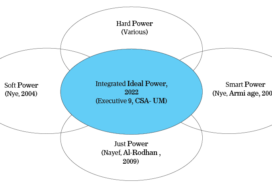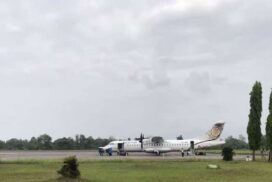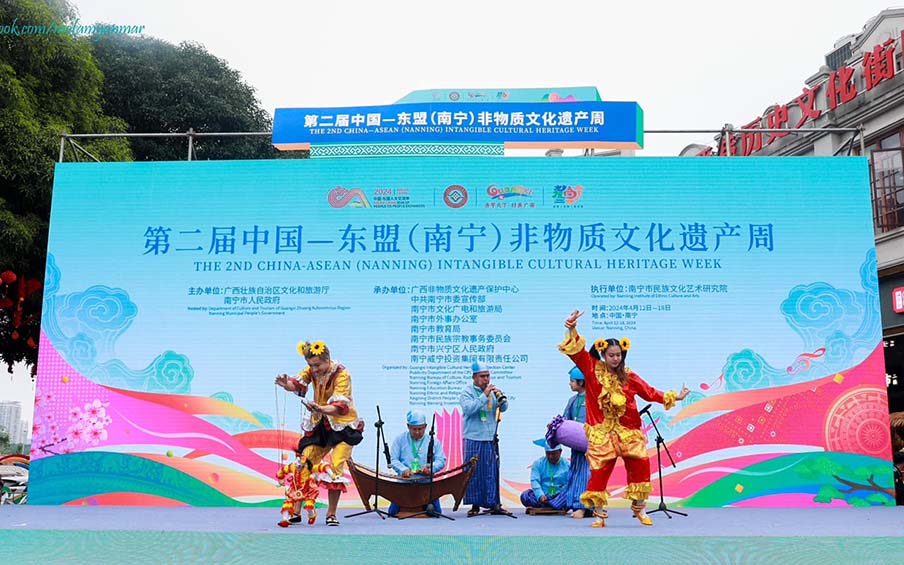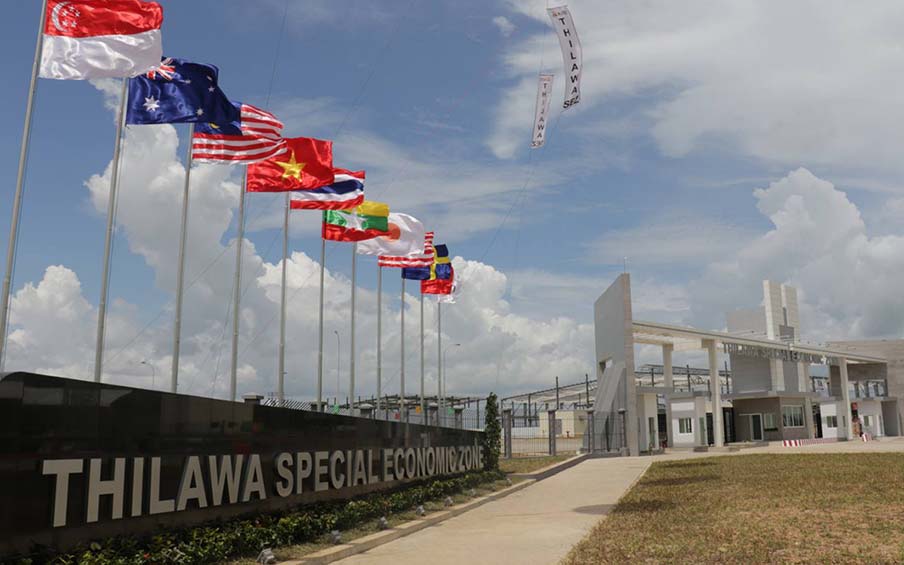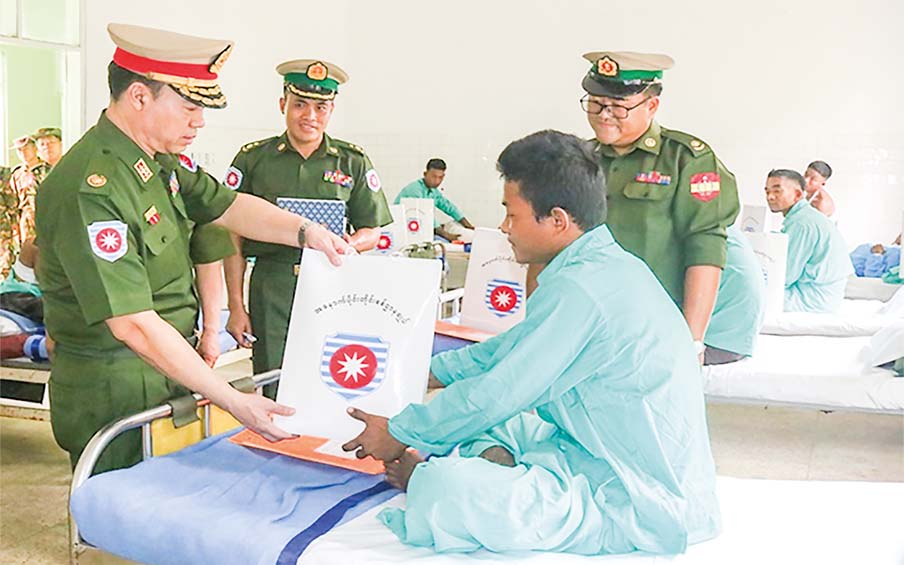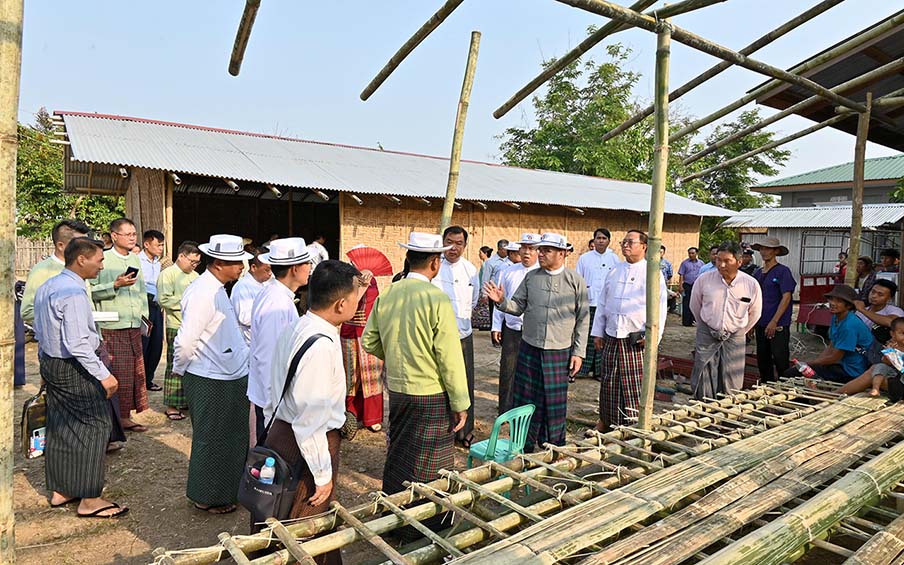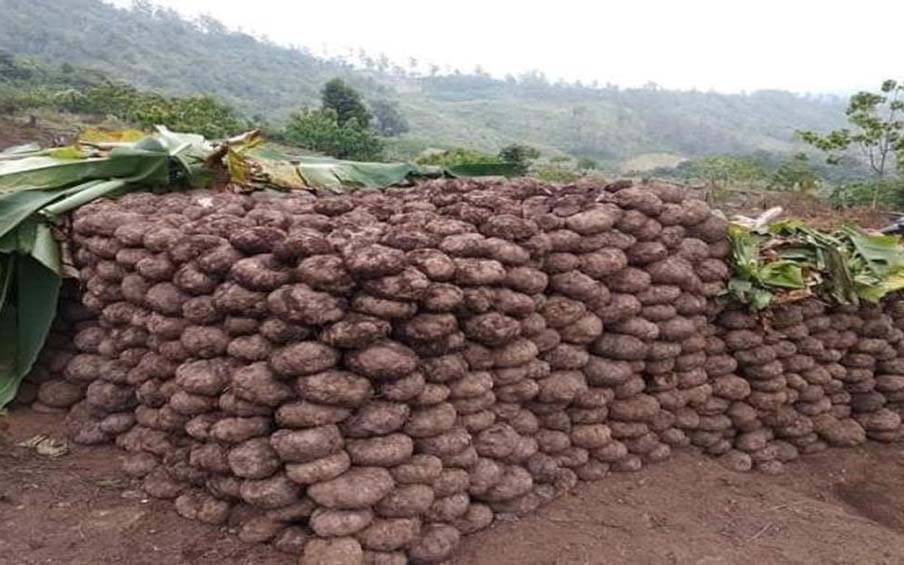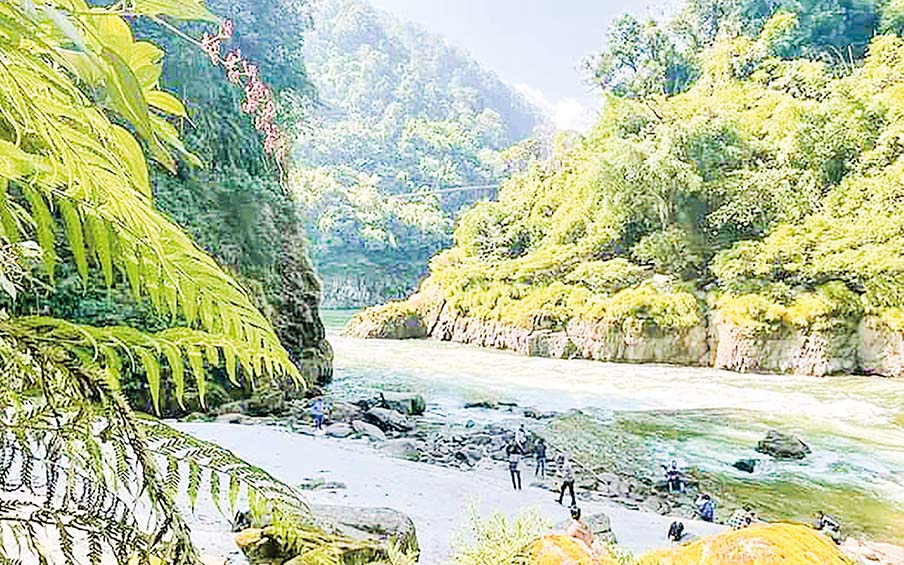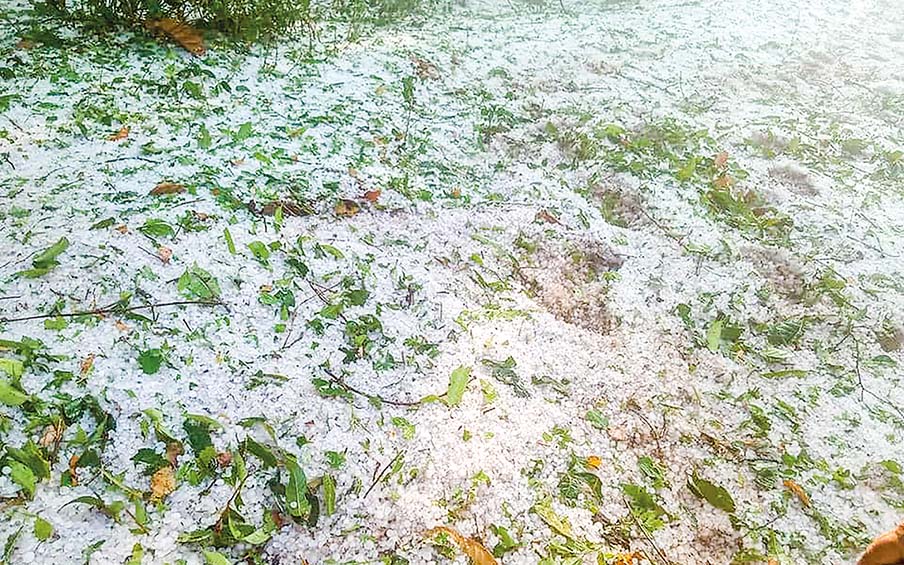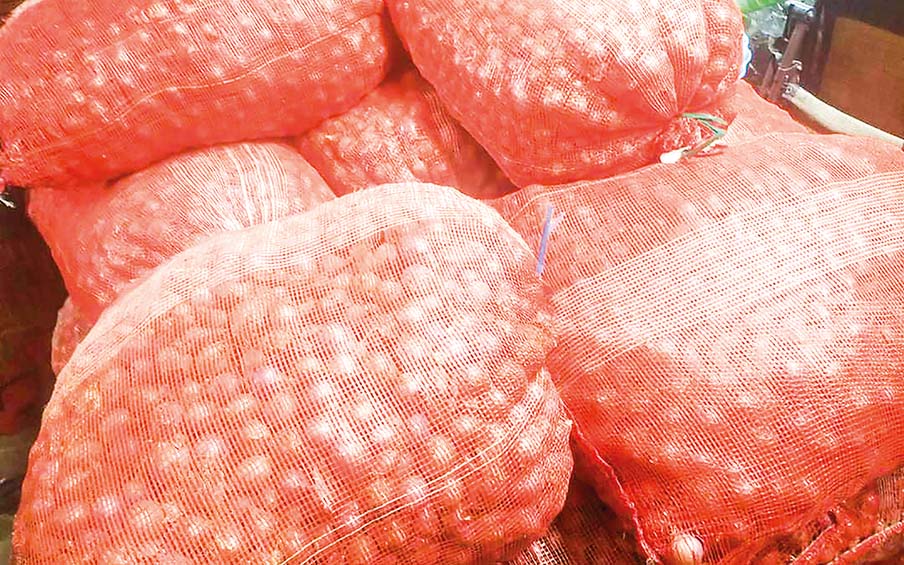By Dr Myint Zan
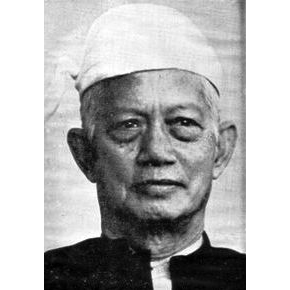 Sayagyi (‘revered teacher’) U Pe Maung Tin (24 April 1888-22 March 1973) passed away on 22 March 1973.
Sayagyi (‘revered teacher’) U Pe Maung Tin (24 April 1888-22 March 1973) passed away on 22 March 1973.
This tribute article will not repeat or rehash the fairly well-known achievements of this great scholar but would only make a brief contextual juxtaposition of two of his books, one translated from the Pali language (which is the lingua franca of Southeast Asian Buddhism) with the title in English The Path of Purity and another book written in Burmese Myanmar Sarpay Thamaing (‘History of Myanmar literature: The first few editions of the book contained an English translation in its cover page exactly with that title).
PART I
THE PATH OF PURITY
Shin Mahar (‘Reverend Great Monk’) Buddhaghosa and his translated Treatise in the Pali language Vissudhimagga
According to the Online version of Encyclopaedia Britannica, the Buddhist monk Buddhaghosa ‘flourished’ between the years 401 Current Era to 449 Current Era (roughly around 1,600 years ago). Buddhaghosa was apparently born in or near Bodh Gaya in northern India and later migrated to Sri Lanka.
Buddhaghosa retranslated the Sinhala language commentaries into the Pali language. Since the 12th century Current Era Buddhaghosa is considered to be one of the foremost commentators on Theravada Buddhist treatises. Apparently, Buddhaghosa was proficient in at least two languages Pali and also 5th century Sinhala language. Lengthy as the work (the English translation by U Pe Maung Tin is about 900 pages around at least 320,000 words) Vissudhimagga 0dok’¨dr*f was a summary (albeit a comprehensive summary) of translation of the commentaries in Sinhala language into Pali by Buddhaghosa.
A Brief Juxtaposition of Buddhist Commentator Buddhaghosa and Christian Theologian Augustine’s Major Works
Buddhaghosa flourished in the early to mid-5th century Current Era. The Buddhist commentator lived parts of his life in North (or some sources say South) India and later in Anuradhapura in the Northern part of Sri Lanka.
‘Saint’ Augustine (also known as Augustine of Hippo) (13 November 354 – 28 August 430) was a major Christian theologian who lived parts of his life in Rome and Hippo, what is now part of Algeria. Just as Buddhaghosa wrote or translated his major work Vissudhimagga apparently in his age 30s and/or 40s in the city of Anuradhapura in Sri Lanka, in the Pali language, Augustine wrote in the Latin language his major work, The City of God apparently in (age) late fifties to early seventies (between the years 413 to 426 Current Era) in the city of Hippo (in the city of Annaba in modern-day Algeria).
Both Buddhaghosa and Augustine were alive at the same time and in different places on the planet between the years 401, the apparent date Buddhaghosa was born (when Augustine was about 46 years old) and 430 when Augustine fell asleep in Jesus or passed away (when Buddhaghosa was about 29 years old).
Theikpan Maung Wa was one of the pupils of Sayagyi U Pe Maung Tin who, together with others (but not limited to) Zawgyi (U Thein Han) (12 April 1907-26 September 1990) and Minthuwun (U Wun) under the tutelage, encouragement and guidance of their own Saya (U Pe Maung Tin) pioneered a new Myanmar literary movement known as the Khitsan (‘testing the Age’) literary movement.
It is trite albeit a tad ‘mischievous’ to state that one of the greatest Christian theologians (Augustine) and one of the greatest Buddhist commentators (Buddhaghosa) were not aware of the existence of each other in separate continents though the ‘moderns’ and informed public would have at least heard of both of these personages.
One also wonders whether Buddhaghosa had begun to translate and write the Vissudhimagga at the age of 29 when Augustine died in the year 430. Augustine apparently did finish writing his monumental City of God in the year 426, about four years before he died.
If mirabile dictu (by a miracle) Buddhaghosa were to read even a smidgen or an excerpt of a few pages of Augustine’s tract (a 1984 Penguin classics translation in English of City of God runs to 1152 pages) in either Pali or Sinhala translation, what would the great Buddhist monk-commentator have thought about it? Conversely, if the great Christian theologian and later Christian Saint were to read even a smidgen or a few excerpts of Buddhaghosa treatise, what would he have thought about it? Just briefly stating the ‘counter-factual hypothetical’, cross-cultural, cross-religious perspective and ‘mischievous whimsy’ or thought of the writer.
‘Standing in awe at the two translators’ dedication, skills and efforts
But back to Sayagyi U Pe Maung Tin’s translation of the Vissudhimagga from the Pali into English, he completed at 34. (In the Pali Text Society, London republication, in 1971, of The Path of Purity Sayagyi U Pe Maung Tin’s Preface was dated ‘10 December 1922’ and it was written at Exeter College, Oxford).
As stated above, Buddhaghosa work was a ‘comprehensive summary’ of the Sinhala language commentaries on aspects of Theravada Buddhism. This writer marvels and gives his humble tribute to the great monk Buddhaghosa for his dedication, efforts and skills in undertaking translations and commentary on apparently what was not his mother tongues from Sinhala to Pali.
Likewise, he also stands in awe at the dedication, skills, and efforts to translate from Pali (not U Pe Maung Tiu’s mother tongue) at a relatively young age The Path of Purity into English (also not his mother tongue). U Pe Maung Tin’s translation of Vissudhimagga into The Path of Purity was completed in the year 1922 about 1470 years after Buddhaghosa passed away. U Pe Maung Tin was perhaps younger when he completed his translation (at the age of 34) than Buddhaghosa was when he started his own translation (as well as commentaries) from the Sinhala to Pali. In the words of Professor C.WF Rhys Davids (27 September 1857-26 June 1942) in the afterword to Sayagyi U Pe Maung Tin’s landmark translation:
‘The Pali Text Society … has profited by a great deal of this scholar- generosity. And in the words of the Pitakan saintly pass-list, we may say, “So the man Pe Maung Tin became also of the Worthy Ones”. Great verily is his merit.’ (The Path of Purity Being a Translation of Buddhaghosa Vissudhimagga’, Pali Text Society, London, 1971, page 880)
In his own tribute to his own Sayagyi U Pe Maung Tin after U Pe Maung Tin’s death, one of his dear students, the poet and scholar Minthuwun (10 February 1909-15 August 2004) translated the above statement into Burmese and stated to the effect that such abundant praise by Mrs Rhys Davids who is known as the ‘Queen of Pali literature (Pali Devi) might be considered by some as the ‘conceit of great exaggeration’ (Ati Wutta Daw Tha)twd0kw¦a’go, but Sayagyi Minthuwun averred that the treatise writers may consider Rhys Davids statement as a prosody of great and abundant praise (Atate thaya wuthti alinga) twdo,0kwÅdtvuFm rather than a ‘conceit’ or ‘flawed’ analogy. Sayagyi Minthuwun’s and Mrs Rhys Davids praises are such that ‘verily great would be their merits’ for such deep appreciation of the sterling achievements of Sayagyi U Pe Maung Tin.
Sayagyi U Pe Maung Tin’s translation of The Buddha’s Twin Sermons
Fast forward 50 years from late 1922 to late 1972 and early 1973. Sayagyi U Pe Maung Tin did another translation, this time both from the Pali and in reference to the Burmese translation (from the Pali) by Ledi Sayadaw (1 December 1846-27 June 1923) of the Buddha’s twin sermons, namely (in English translation) ‘The Turning of the Dhamma Wheel’ (Dhammaskya) ‘The Discourse on Non-self’ (Anatta Lekhanna Sutta). Apparently, Sayagyi completed his translation a few weeks or perhaps several days before he passed away on 22 March 1973. The Pali versions of the twin Sermons, the Burmese translation by Ledi Sayadaw and the English translation by U Pe Maung Tin was published in a pictorial (type of booklet) after his demise.
This writer wonders why Sayagyi deferred the translation into English of these foundational doctrines of Buddhism past his age eighties and not when he was in his prime in his 30s. Prima Facie Buddhagosa’s Vissudhimagga is much bulkier than the much shorter but more original foundational sermons of Buddhism. Perhaps even in the 1920s, there have been other English translations of the Twin Sermons, and perhaps Sayagyi at that time did not feel it necessary to translate them.
In 1982 I donated a copy of the pictorial booklet, which was first published may be in the mid0-1970s, to a library at the University of Michigan in the United States.
I have bought and re-read a republication of U Pe Maung Tin’s translations republished by a publishing house around 2014, and regrettably, it contains a lot of typos, mainly though not limited to the English translation. In the republication in the year 1971 of The Path of Purity in a 901-page tract, there were only 15 typos, all of which are listed in detail in the ‘Corrigenda’.
Part II
HISTORY OF Myanmar LITERATURE
In 1938 U Pe Maung Tin published the first edition of his book Myanmar Sar Pay Thamaing (‘History of Myanmar Literature’). Previous to that U Pe Maung Tin played a pivotal role in establishing the Myanmar Department at Rangoon University (as they were then formally designated).
According to the web site of the Myanmar Department at University of Yangon U Pe Maung Tin became Professor and Head of the Burmese Department in 1924. One of the early graduates specializing in Myanmar was Theikpan Maung Wa (U Sein Tin) (5 June 1899-6 June 1942), who graduated from the University of Rangoon in 1927. Theikpan Maung Wa was one of the pupils of Sayagyi U Pe Maung Tin who, together with others (but not limited to) Zawgyi (U Thein Han) (12 April 1907-26 September 1990) and Minthuwun (U Wun) under the tutelage, encouragement and guidance of their own Saya (U Pe Maung Tin) pioneered a new Myanmar literary movement known as the Khitsan (‘testing the Age’) literary movement.
The Khitsan literary movement made a sharp or significant departure from both the theme(s) and the writing style of the then prevailing literary milieu, which at times can be stiff or florid in style and limited in themes. Khitsan provides a fresh, challenging outlook both in terms of substance and created a new literary genre. The Khitsan literary movement in the earlier years met with some critiques both from literary conservatives for ‘abandoning’ the traditional themes and at least from one leftist political (arguably) radical U Thein Pe Myint (10 July 1914-15 January 1978), for not being politically left ‘enough’.
But back to Myanmar Sarpay Thamaing. In his oration at the funeral of his own Sayagyi U Pe Maung Tin on 24 March 1973, Sayagyi Minthuwun, among others, stated that while studying at the Oxford University in the UK in the 1920s, U Pe Maung Tin researched the printed Burmese books as well as Parabaiks (‘thick sheets of paper that are blackened, glued and folded together) in various libraries to collate the facts and developments in Burmese literature throughout the ages. Minthuwun also stated that with the assistance of some of his students, which he gladly accepted U Pe Maung Tin wrote and published the Myanmar Sarpay Thamaing, which as of 2013 has at least eleven editions or reprints.
Sayagyi U Pe Maung Tin encapsulated the developments in Burmese literature from the Pagan era, starting with the Myazedi (now also known as Raza Kumara) Kyauk Sar Stone Inscription of the Pagan era up to (roughly)about three decades after the annexation of Upper Burma by the British on 1 January 1886 with the literary works of Ledi Sayadaw (1 December 1846-27 June 1923). In the Preface or Introduction to the first edition of his book, U Pe Maung Tin wrote to the effect that given the nature of the work selection of literati and their writings throughout the centuries and the ‘literary epochs’ have to be sort of eclectic. He asked the readers to eschew from commenting that his book should also have included the names and writings of literati ‘missing’ in his book.
It is pleasing to note that at least one other scholar (and there may be and there are others as well) who was not even born when U Pe Maung Tin published the first edition of Myanmar Sarpay Thamaing in 1938 Maung Khin Min (Danubyu) (Dr Khin Aye) (born 1942) has produced at least two books which continue the research tradition regarding the history of Burmese literature. Saya Maung Khin Min (Danubyu) published Colony Khit Myanmar Sar Pay Thamaing (‘A History of Myanmar Literature during the Colonial Era’) around 2007 and his Myanmar Sarpay Khayee (‘The Journey of Myanmar Literature’) which was published around 2013. These two books narrate and present some of the themes and writers from the Pagan era to the end of colonial times in a fresh perspective and narrative. Maung Khin Min’s books do not replicate what is covered in the 1938 treatise of U Pe Maung Tin.
Sayagyi U Pe Maung Tin’s The Path of Purity and Myanmar Sarpay Thamaing are only two works in the significant body of contributions that the late Sayagyi has made. They not only indicate the great scholar’s language and literary skills covering the Burmese, English and Pali languages but also his dedication, research skills and erudition.
In 2017 the bust of Sayagyi U Pe Maung Tin was unveiled at the Myanmar Department of Yangon University in a ceremony attended by retired President U Htin Kyaw (born 20 July 1946). Sayagyi’s contributions to Myanmar Sar, both in its language and literary dimensions, is very significant. His contributions to translation (English language) and the Pali language (now Department of Oriental Studies) are also very significant, which deserves recognition.
On the occasion of the anniversary of Sayagyi U Pe Maung Tin’s passing, it is an honour to give this tribute through a commentary on two of his exemplary books.

